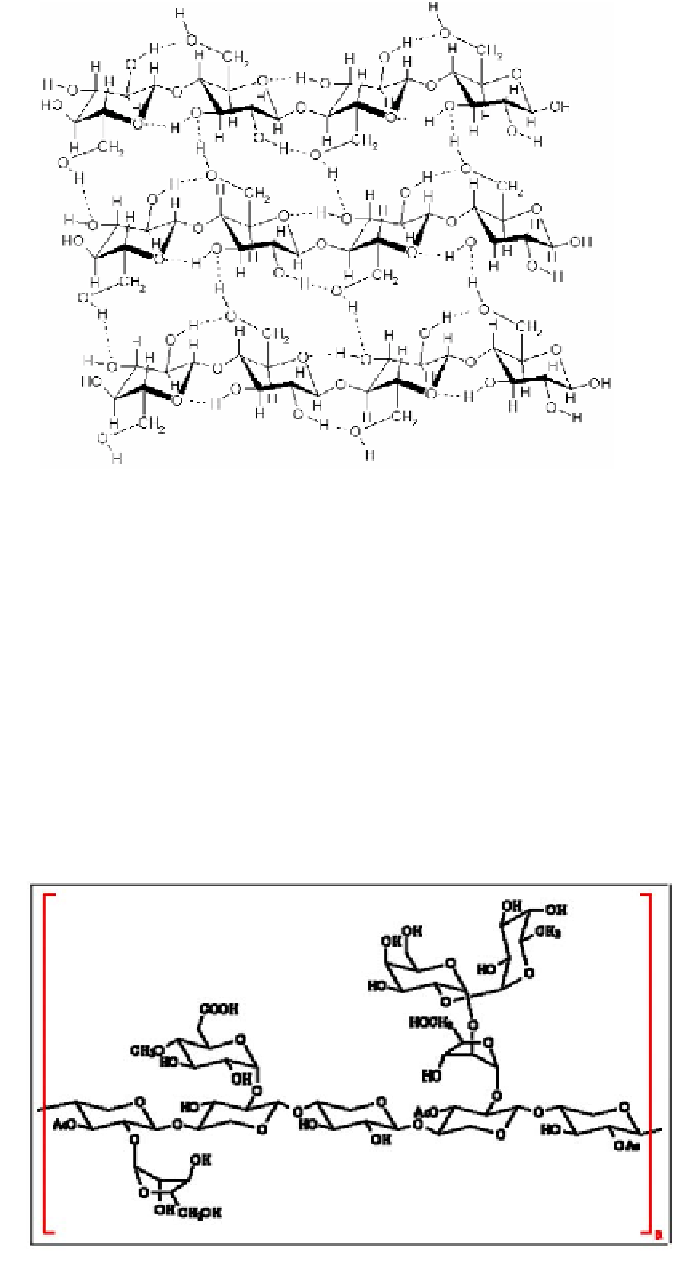Environmental Engineering Reference
In-Depth Information
Figure 6. Cellulose structure.
In the biorefinery concept, the first treatment which cellulose undergoes is usually acid or
enzymatic hydrolysis to glucose, if the feedstock is not pyrolysed or gasified. This sugar
monomer is a key chemical that can mainly follow two routes: fermentation or chemical
synthesis (Schiweck et al., 1991).
The second main component of lignocellulosic biomass is hemicellulose (see Figure 7),
which is relatively easier to breakdown to sugar monomers with chemicals and/or heat than
cellulose. It contains a mix of C6 sugars (galactose and mannose) and C5 sugars (xylose and
arabinose), which represent a great potential for the production of biofuels or chemicals.
Xylose, the most representative sugar in hemicellulose, can mainly undergo three different
pathways: hydrogenation to xylitol, acid treatment to furfural and fermentation to bioethanol
together with C6 sugars (Kamm et al., 2006b).
Figure 7. Hemicellulose structure.






